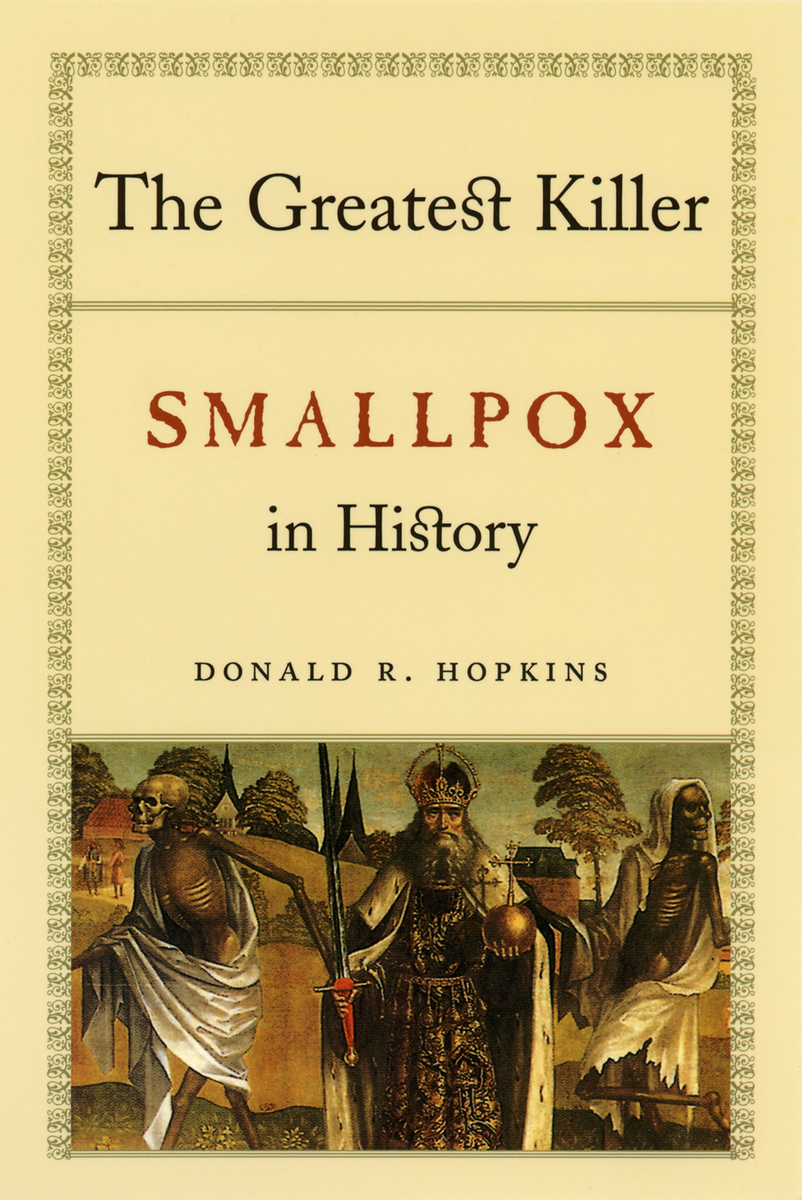The Greatest Killer
Smallpox in History
University of Chicago Press, 2002
Cloth: 978-0-226-35166-7 | Paper: 978-0-226-35168-1 | Electronic: 978-0-226-18952-9
DOI: 10.7208/chicago/9780226189529.001.0001
Cloth: 978-0-226-35166-7 | Paper: 978-0-226-35168-1 | Electronic: 978-0-226-18952-9
DOI: 10.7208/chicago/9780226189529.001.0001
AVAILABLE FROM
University of Chicago Press (paper, ebook)ebrary
EBSCO eBooks (formerly NetLibrary)
Google Play
ABOUT THIS BOOKAUTHOR BIOGRAPHYTABLE OF CONTENTS
ABOUT THIS BOOK
Once known as the "great fire" or "spotted death," smallpox has been rivaled only by plague as a source of supreme terror. Although naturally occurring smallpox was eradicated in 1977, recent terrorist attacks in the United States have raised the possibility that someone might craft a deadly biological weapon from stocks of the virus that remain in known or perhaps unknown laboratories.
In The Greatest Killer, Donald R. Hopkins provides a fascinating account of smallpox and its role in human history. Starting with its origins 10,000 years ago in Africa or Asia, Hopkins follows the disease through the ancient and modern worlds, showing how smallpox removed or temporarily incapacitated heads of state, halted or exacerbated wars, and devastated populations that had never been exposed to the disease. In Hopkins's history, smallpox was one of the most dangerous-and influential-factors that shaped the course of world events.
In The Greatest Killer, Donald R. Hopkins provides a fascinating account of smallpox and its role in human history. Starting with its origins 10,000 years ago in Africa or Asia, Hopkins follows the disease through the ancient and modern worlds, showing how smallpox removed or temporarily incapacitated heads of state, halted or exacerbated wars, and devastated populations that had never been exposed to the disease. In Hopkins's history, smallpox was one of the most dangerous-and influential-factors that shaped the course of world events.
AUTHOR BIOGRAPHY
Donald R. Hopkins, M.D., is an associate executive director of The Carter Presidential Center in Atlanta. He is a former deputy and acting director of the Centers for Disease Control and Prevention and a physician who participated in the World Health Organization's Smallpox Eradication Program. The first edition of this book was nominated for a Pulitzer Prize in 1983.
TABLE OF CONTENTS
Illustrations
Introduction—January 2002
Preface
Acknowledgments
1. Variola Rex
2. The Most Terrible of All the Ministers of Death
3. Heavenly Flowers
4. Kiss of the Goddess
5. The Spotted Death
6. The Great Fire
7. A Destroying Angel
8. Erythrotherapy and Eradication
Chronology
Notes
Bibliographical Note
References
Index
